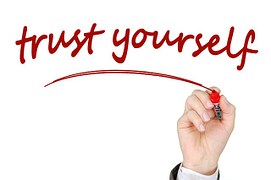4 Vital Skills That Make Problem-Solving Possible
 “Problem-solver.” In career circles, the descriptor is right up there with “team player” and “detail-oriented.” People love to tout the importance of finding solutions and how good they are at it.
“Problem-solver.” In career circles, the descriptor is right up there with “team player” and “detail-oriented.” People love to tout the importance of finding solutions and how good they are at it.
John is sure to put it on his resume and is interview-ready with solution-oriented answers to fictional crises.
Jane makes certain the project leader in her office knows her thoughts for improving the employee turnover challenges at their company.
But what happens when the issues facing John and Jane have no immediate solution? Do they really have the skills to jump in with the right blend of analysis and creativity to save the day? Do you?
Are you unsure or anxious about your problem-solving skills? Do you procrastinate addressing problems because solutions feel too risky or out of reach?
To address that issue consider the following life coaching advice to be your problem-solving primer.
4 Problem-Solving Skills to Practice and Appreciate in Others
1. Assessment: Define & Structure the Problem
Ask: What is the real problem? What is the true nature of it? How is the problem best described? How can you increase your understanding?
Be as curious as possible in the first stage of problem-solving. Sometimes one overwhelming problem reveals itself to be three smaller, more manageable issues. Sometimes the problem really isn’t much of a problem at all.
Whatever the case, taking the time to get as analytical as possible is a crucial step. Employing this skill may feel time-consuming and less productive, but remember, you don’t know what you don’t know.
In addition, remember that it doesn’t serve the problem-solving process well to jump to conclusions. As careful as you want to be about assessing the problem, be sure not to give problems too much power. Problems are part of growth.
In fact, you may want to include in your schedule life coaching or counseling sessions, as they may help you uncover unproductive habits or thoughts that interfere with clear analysis and undermine your confidence in challenging situations.
So, step back, look hard, and determine what’s what. You’ll likely find you feel less emotional or burdened and more in control when you get some distance between you and the dilemma.
2. Brainstorming: Devise Solution Possibilities
Think: Spend time fact-finding and clearly outlining the problem and possible solutions. Approach the goals and barriers (what you are attempting to achieve and what is getting in the way) with an open mind. Focus more on a range of potential answers than evaluating each one as soon as you think of them.
The ability to think about solutions from a variety of angles is invaluable when you’re faced with a tough or complex problem. The clarity you’ll gain supports critical and creative thinking. Allow yourself to think freely without squelching or censoring ideas.
It is often very helpful to have a cache of ideas to work with, gathered from many sources, rather than attempting to shoulder all the responsibility of determining solutions on your own.
Thus, it makes sense to utilize the minds and perspectives of your team, mentors, life coaching professional or other trusted people in your life.
3. Evaluation: Determine Solution Viability & Make a Decision
Choose: Analyze each possible solution for real-world viability. Determine the pros and cons on a variety of levels. Select the best possible course of action.
At this point you are informed and have the power of choice. You’re also able to direct your efforts at vetting the potential answers to your problem. This can be the most intimidating step as it carries the responsibility of commitment to action.
Still, carefully working through your options with your life coach or mentor can help the cause.
Some possibilities will be eliminated immediately. Some will falter due to time issues, budget constraints or undesirable impact on people and relationships. Some solutions might just create more problems.
Next, choose the best possible solution or go back to employing your brainstorming skills for more viable possibilities. Eventually, you’ll reach the most desirable decision and prepare to execute it.
4. Implementation: Execute Solution and Adjustment
Pay attention. Follow through with your decision as completely as possible, then watch and learn.
Essentially, it’s action time. Do what you decided to do and deal with any unforeseen circumstances that may arise.
From there, begin monitoring the outcomes of your solution.
Was your problem solved successfully? What is the feedback from those affected? If necessary, work on the required adjustments. With appropriate implementation, you’ll feel more secure in your choice and your ability to understand the results, tweaking it as you see fit.
Effective problem solving makes the most of routine skills practice and solid support.
Maybe you’re a problem solving natural. Maybe you really have to work at it. Or maybe you’re fortunate enough to have co-workers, teammates, loved ones, or advisers that are born fixers.
Whatever the case, you’ll be most effective by amplifying what you do well, practicing skills you need to learn, and respecting the skills of those around you.
If you commit to working through a problem, however risky or challenging it feels, secure solid support to back you up. Keep in mind that these 4 key skills are just a portion of the knowledge and tools offered by regular life coaching sessions.
With a coach, you’ll find ways to take your goals to the next level and/or maximize transitional periods in your life.
Click here to learn more about Life Coaching
About the Author
Dr. Stan Hyman is a licensed psychotherapist and life coach in private practice in Miami, Florida. He works with people wanting to perform at higher levels to achieve success in both life and work. This includes individuals, couple, and business partners.
